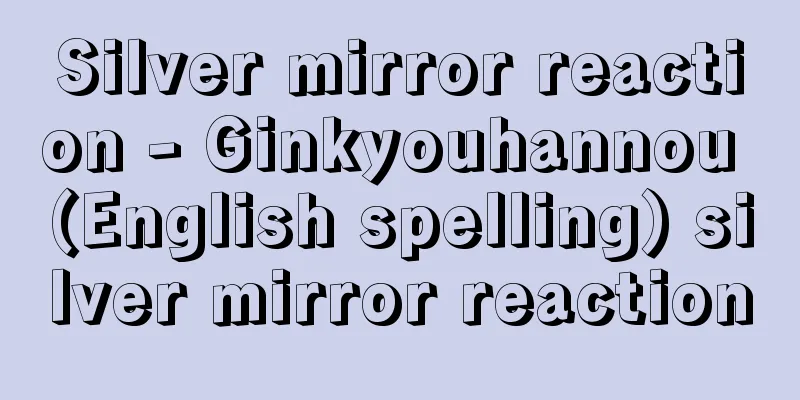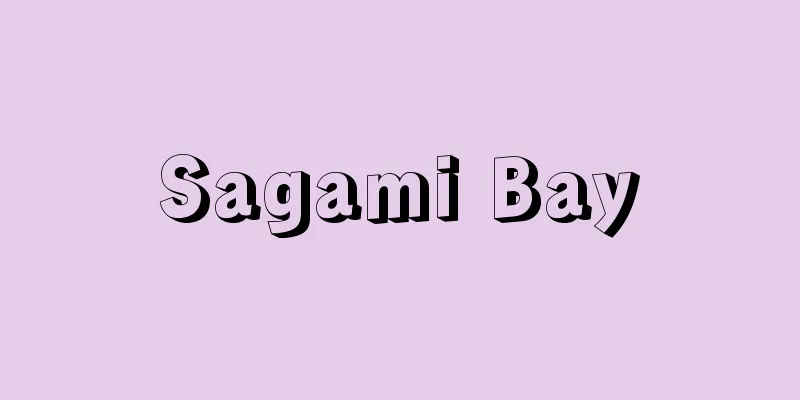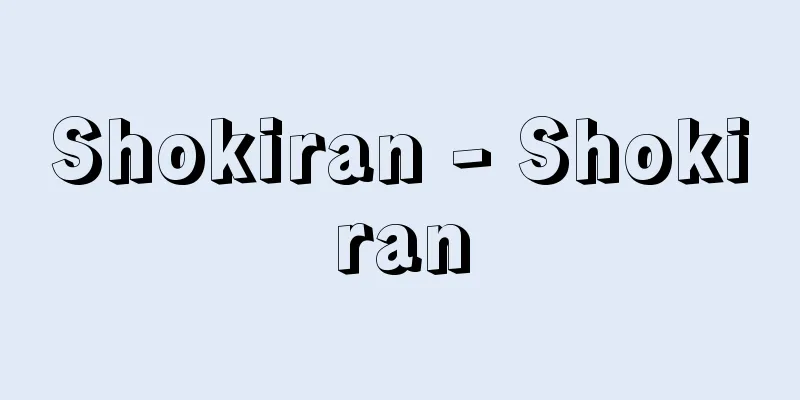Silver mirror reaction - Ginkyouhannou (English spelling) silver mirror reaction

|
This is a detection reaction for reducing organic compounds. A sample is placed in a glass container with a cleaned inside, and a silver nitrate solution is added. Ammonia water is added until the brown precipitate that forms disappears to create a transparent solution. When this is heated with a small flame on a burner or in a water bath at 50-60°C, silver precipitates on the inside of the container, and the container is silver-plated. This is called a silver mirror, and this reaction is called the silver mirror reaction. Formaldehyde, reducing sugars such as glucose and fructose, and tartrates, etc., show this reaction. The silver plating of Dewar flasks and mirrors is based on this reaction. Sucrose (a non-reducing disaccharide, usually called sugar) does not show this reaction. The detection method using the silver mirror reaction is called the silver mirror test, and is used for the qualitative analysis of reducing substances. Some metal ions form white hydroxide precipitates in an alkaline ammonia solution, but form ammine complexes with an excess of ammonia. Examples are Ag + , Cu 2+ , and Zn 2+ . Ammine complexes are usually colorless and transparent, but some are colored depending on the properties of the metal ion. [Cu(NH 3 ) 4 ] 2+ is deep blue. When ammonia is added to a silver nitrate solution, Ag + + OH - - → AgOH [Ag(NH 3 ) 2 ] + +e - Ag+2NH 3 [Yoshio Narusawa] "Chemical Society of Japan, ed., 'Chemical Handbook: Basics', 4th Revised Edition (1993, Maruzen)" ▽ "Saturday Science Experiments,' by Hirotoshi Akiyama (2002, Bungeisha)" [References] | | | | | | | | | | |Source: Shogakukan Encyclopedia Nipponica About Encyclopedia Nipponica Information | Legend |
|
還元性有機化合物の検出反応の一つ。内面を清浄にしたガラス容器に試料を入れ、これに硝酸銀溶液を加え、いったん生ずる褐色沈殿が消失するまでアンモニア水を加えて透明溶液にする。これをバーナーの小炎で熱するか、あるいは水浴中で50~60℃に加温すると、容器の内面に銀が析出し、容器が銀めっきされる。これを銀鏡といい、この反応を銀鏡反応という。ホルムアルデヒド、ブドウ糖や果糖のような還元糖、酒石酸塩などはこの反応を示す。デュワー瓶や鏡の銀めっきはこの反応に基づいている。ショ糖(非還元性二糖類、通常砂糖とよばれている)はこの反応を示さない。銀鏡反応を用いる検出法を銀鏡試験といい、還元性物質の定性分析に利用される。 ある種の金属イオンはアンモニアアルカリ性溶液中で水酸化物の白色沈殿を生成するが、アンモニアの過剰でアンミン錯体を生成する。Ag+、Cu2+、Zn2+などがその例である。アンミン錯体は通常無色透明であるが、金属イオンの性質により有色のものもある。[Cu(NH3)4]2+は濃青色である。硝酸銀溶液にアンモニアを加えたときに [Ag(NH3)2]++e-Ag+2NH3 [成澤芳男] 『日本化学会編『化学便覧 基礎編』改訂4版(1993・丸善)』▽『秋山浩利著『土曜日の科学実験』(2002・文芸社)』 [参照項目] | | | | | | | | | | |出典 小学館 日本大百科全書(ニッポニカ)日本大百科全書(ニッポニカ)について 情報 | 凡例 |
Recommend
《Andria》(English spelling)Andria
…He died on a journey in 159 BC, leaving only six...
Crested Hawk-Eagle - Crested Hawk-Eagle
…The mountain eagle family includes 20 species in...
Gankouroku - Gankouroku
…In addition to his poetry, his Shaku Daxing Lun,...
Zhou Dunyi - Shutoni
A Chinese thinker from the Northern Song Dynasty....
Karakoram [mountain range] - Karakoram
…the Karakoram mountain range is located in the c...
Da-qing hui-dian; Ta-ch`ing hui-tien
A comprehensive code of law that outlined the gene...
Totsukawa Village Samurai
A local samurai who lived in the mountain village...
Bactra
…An ancient city in northern Afghanistan, whose a...
δ function - delta function
A function introduced by P.A. Dirac to formulate q...
Optical Rotatory Power
This phenomenon occurs when a material rotates li...
Hairy flower wasp
A general term for insects belonging to the family...
Secondary anemia
…Sideroblastic anemia can be hereditary or acquir...
Crooner
A term referring to a certain type of pop singer w...
Martianus dermestoides (Korean mealworm beetle)
An insect of the Tenebrionidae family in the Coleo...
Nuclear polyhedrosis - nuclear polyhedrosis
This is one of a group of viral diseases of insect...




![Yoneyama [town] - Yoneyama](/upload/images/67cd1b3974685.webp)




